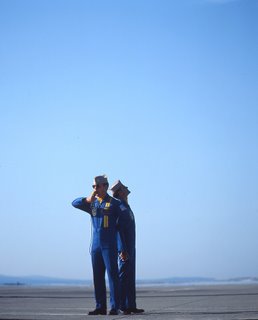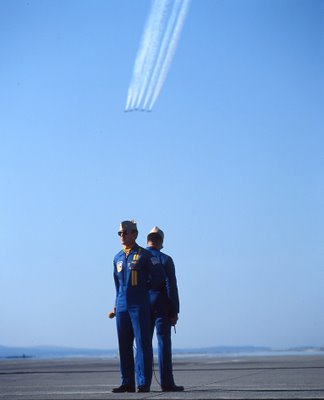No Tricks - All Treat
Friday, October 31, 2008
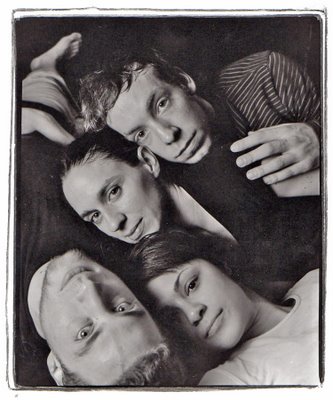 From the first blush of romance, to moments of turmoil and solitude, to a superhuman effort to revive what has been lost, a couple who has been “around the block” discover that nothing stays the same forever. From the first blush of romance, to moments of turmoil and solitude, to a superhuman effort to revive what has been lost, a couple who has been “around the block” discover that nothing stays the same forever.
The full length Around the Block is a choreography inspired by New York City, a city rife with urban turmoil. The collision of architectural styles, the collision of cultures and the collision of people will inspire an energetic dance work that delves deep into the inner workings of an urban centre. Four characters will discover their place within this metropolis of strangers.Day Helesic Yesterday afternoon I watched four beautiful and fit dancers dance for one hour. I was so close (in the Vancouver Dance Centre) I could hear the dancers gasping for air. I had been here before, last December. The work had progressed. Helesic explained how each segment (four representing 42nd Street, 5th Avenue, Central Park and Broadway in New York City) would be preceded by four separate three and a half minute films shot either from a car on a bicycle of these streets or locations. Watching Day Helesic, centre left, Amber Funk Barton, bottom right, Shay Kuebler, top left and Josh Martin, bottom left, felt almost like a private pleasure. And I will share, this, with you. What I saw yesterday you can see today from 4 to 5 at the Scotia Vancouver Dance Centre from 4 to 5 for free. You will get one hour of intense cutting edge modern dance up front.
Cyrano De Bergerac, Frida Kahlo & A Cure For All Diseases
Thursday, October 30, 2008
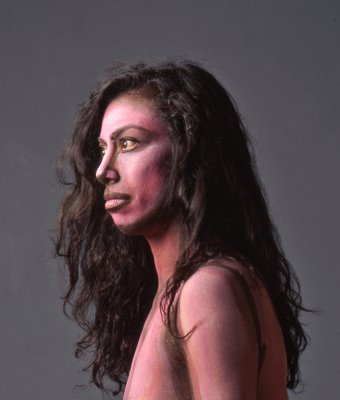 One of my favourite British mystery writers is Reginal Hill and in his latest, A Cure for All Diseases his fat Yorkshire Detective Superintendent is convalescing from an almost terminal bomb explosion in the resort coast town of Sandytown. The novel is loosely baced in Jane Austen's unfinished last novel (1817) Sanditon. Hill's novel, like Austen's , experimentints with the practical ideas of communication through gossip. Two sisters email each other in alternating chapters. Reginald Hill is a master in the correctness and the infinite intricacies of the English language. I read Hill knowing at the very least that I will be reading a mystery novel that is literature, too. The fun I have reading Hill leaves me with no escapist guilt. Being over 60, my knowledge of who or what Cyrano de Bergerac is, is "far more" extensive than that of someone under 30. I read the 1951 Classics Illustrated, and had literature professors drone on and on as I slept in class. And to top that I saw the 1950 Michael Gordon Cyrano de Bergerac with José Ferrer as Cyrano. I was 10. My parents had lured me into seeing it by me by telling me it featured espadachines or sword fighters and lots of sword fights. All I remember is Ferrer's voice, his long nose and the brilliant Technicolor. Alas of the third I am wrong as the film was released only in b&w! Minutes into last night's premier performance at the Stanley of the Arts Club Theatre Company production of Cyrano de Bergerac by Edmond Rostand and directed, translated and adapted into English by James Fagan Tait I was perplexed and initially put off by Cyrano uttering stuff in contemporary English like "pal". While listening to the dialogue (and laughing lots) I thought about Reginald Hill's A Cure For All Diseases. In the email communication between the two gossiping sisters I had noted that Hill had eliminated quotation marks and there were all kinds of typos. "Can it be, that his novel was rushed to the printers which poor typo correcting?" I thought. Then it dawned on me that Hill was using contemporary writing and injecting a bit of what Austen had first tried to inject in her unfinished novel. Austen, Hill and now James Faigan Tait where on the same map for me. As Faigan Tait notes in the program: In its day, the play was fresh, spoke like the people and sounded like comic improvised verse and because of that it shocked people with its presence in each moment despite its glamorous period context.
With this in mind, welcome to 17th-century Paris of this very moment. Don't be surprised if the people in that time look and sound a little bit like us right now. I quickly forgot the anachronistic language and gloried at seeing the elaborate costumes (Nancy Bryant) and listening to beautiful musical accompaniment (Joleysa Pankanea and Mark Haney) and songs of this play. While watching Chilean-born Carmen Aguirre (above left) appears in many roles. As a Duenna she seems to have a future career as an imposing and scary mother-in-law (a distinct possibility as she has a young son), as a nun she would have soon caused any mother superior to commit suicide and as an orange seller she was most convincing as a perveyor of other more sexy delights. But it was her moustache as a cadet that nagged my brain. It came to me as I was driving home with Rosemary. In February 2000 Aguirre had appeared on that same stage (the Stanley) as Frida Kahlo in a one actor show that was one I will never forget. Her performance was convincing and her makeup, costume and moustache (fake?) were so good that she seemed to be channeling Kahlo before my very eyes. With that confusion finally solved I remembered a young man sitting behind me in last night's performance who said to his companion, "So this is the Stanley?" Somehow this play had brought that young man to enjoy, perhaps for the first time, the delight of theatre. I plan to return with my granddaughter Rebecca (now 11) and see if she gets a bit more than I did back then in 1951. "Yes, it is perfect. Your white gown swathed in the blue-black mantle of night. I am only a voice, and you are a point of light. I may have spoken Beautifully to you in the past--"When Rebecca sees the beautiful and glamorous Roxanne (Melissa Poll) she might be as fascinated as I was when she glowed as much as Cyrano's starry sky.
Kay Alsop's Friend
Wednesday, October 29, 2008
 In 1987 Kay Alsop was a YWCA Woman Of Distinction. A few years later, probably 1992, the YWCA decided to publish a magazine with portraits of some of the past winners. I took those portraits and one of them was the most gracious and lovely former fashion writer for the Province, Kay Alsop. I had met her a few times before in the Vancouver Sun/Province newsroom and I came to the conclusion that Alsop prevented the really styless Province from being so. I felt like going to her and saying, "How can a classy gal like you work in a place like this?" When I met her at her home for her photos she told me she loved her white camellia. This would mean that I must have taken the pictures in early spring of 1992. Malcolm Parry had been a columnist for the Vancouver Sun for about a year. I asked her about him. Kay Alsop smiled at me with that beautiful smile of hers and said, "Mac will turn off the lights at the Sun."
Wasserman's Beat & Vancouver's Short Memory
Tuesday, October 28, 2008
 Sometime in the early 90s a few signs were put up on the lamposts on Hornby Street near the area of Dunsmuir and Georgia. The signs said Wasserman's Beat and by then Vancouver's memory was working as usual (we seem to have a short memory). As I have written here before, someone's face appears on the Vancouver Sun with the caption "crook" and a few years later that "crook" returns to Vancouver and becomes a successful developer, gallery owner and or stock promoter. Nobody remembers. Jack Wasserman was certainly no crook. He was an influential columnist with the Vancouver Sun until the day he died of a heart attack, an evening on April 6, 1977. He was speaking at the Hotel Vancouver during a roast for Gordon Gibson Jr. While I cannot confirm her presence then, I would suspect that Valerie Gibson was there. She was the wife of Gordon Gibson Jr. who was the Liberal Leader for BC. Valerie Gibson would have been there since Gibson Sr. was her father-in-law. She was not yet the successful gossip columnist for Vancouver Magazine. Had she been working by then, the savvy editor Mac Parry would have dispatched her to write about it. During his editorship of Vancouver he made sure his magazine infromed readers the activities of City Hall, on Provincial politics, and the relative health and effectiveness of our newspapers and our TV and radio stations. In those years, the 70s, 80s and early 90s Vancouver Magazine was truly a city magazine that reported on urban affairs. It was often that I would read in the Vancouver Sun articles (even written by political columnists) who quoted writers from articles in the magazine. 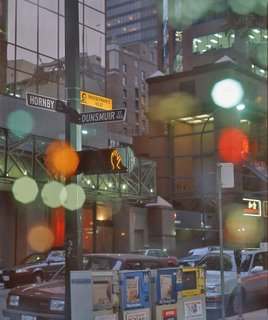 Wasserman came to Vancouver in 1935 at age 8. He dropped out of law school to take a reporter's job with Ubyssey. He graduated from UBC (1949)and then joined the Vancouver Sun, becoming a police reporter. His biggest scoop was the sordid death of Errol Flynn in a West End apartment. Wasserman was a longtime gossip and self-described "saloon reporter" columnist. He was fired by the Sun (1967) for hosting a radio show but was rehired 18 months later. Wasserman's society and celebrity columns and occasional political analyses wrote up the often-lurid details of the wild heyday, glitter and sleaziness of the Vancouver nightlife and society whirl in the 1950s and 1960s when famous dinner clubs such as The Cave and Isy's attracted big names from around the world. The power of his column was neither diminished nor magnified by the fact that it rarely ran with pictures. It was an age of the written word not the heard word or "seen" word. Malcolm Parry at Vancouver Magazine realized the importance of good gossip and had hired Valerie Gibson for the job. In those early columns by Gibson (perhaps late 70s and early 80s) I was dispatched by Parry to take the photographs for her column. At the height of her popularity her column was the most read column of Vancouver Magazine. So in the early 90s the city decided to tip it's hat in Wasserman's memory and established a few blocks of Hornby as Wasserman's Beat. Both the Cave and the several generations of Gary Taylor's establishments had been on that street. Some reader had sent an enquiry to Vancouver Magazine on why the street had the signs. I was sent to take pictures from which one would be used on the last page of the magazine to explain what Wasserman's Beat was all about. In 1991 Malcolm Parry had worked as editor for just about every decent magazine in Vancouver and for one in Toronto called Vista. He was out of a job. It was during this period that he told me that he had a solution for his unemployment and that he was excited about it. He told me of his admiration for Wasserman and how Wasserman has established a style in his genre. Parry emphasized to me Wasserman's style. It even seems that he himself (Parry) had been present at Gordon Gibson's roast when Wasserman had suddenly collapsed. Shortly after telling me Parry emerged as the gossip columnist for the Vancouver Sun. His Town Talk column is sometimes obscure and only those who know him know of his inside jokes and comments. I like Town Talk because of that! He often cites a particular Vancouver economist as the "early rising ..." It all has to do with Parry having entered a magazine office one early morning and catching the early riser on top of a woman, on top of a desk. He once told me, "I want him to know that I know. I don't want him to forget that." 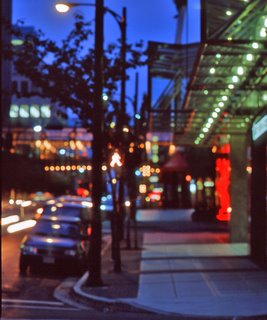 And of course there is Parry's talent for photography particularly his interest in beautiful women and particularly in those who are beautifully endowed, too. Looking for a possible random subject for today's blog I surfed my W,X,Y,Z file and found these slides of Wasserman's Beat. I had forgotten about them. But when I spot the sign on Hornby I always remember the night that I patiently tried to take pictures of it from every angle possible. I think that few might remember who Wasserman was and perhaps in some not so distant future someone will dispatch a photographer to take a picture at a corner (where would that be?) that will have a sign that says Parry's Beat. Poor Vancouver with its poor memory. Addendum I wrote to Malcom Parry to see if he could kindly check for inaccuracies. Here is his reply: Any inaccuracies?I wasn't at the Gordon Gibson Sr. roast. Valerie was, sitting alongside or near Wasserman. The early rising event was witnessed not by me but by ..., the ....... paste-up artist at ....Magazine. I believe Jack was fired when he would not give up a CJOR show he had taken during one of the lengthy strikes the newspapers endured then. When did Valerie begin her column with you?Her first appearance was with the Faraway Places column for March, 1977. She wrote about Maui, where clan Gibson had the Maui Lu compound and hotel. Jack Wasserman wrote about Hawaii for the same column in September, 1976. Faraway Places became Garry Marchant's sole preserve in September, 1978. Valerie took over the City Seen column from Terry Zacks in the November, 1977 edition. Mac
Two Dogs Called Lulu & Rebecca Haunts Halloween
Monday, October 27, 2008
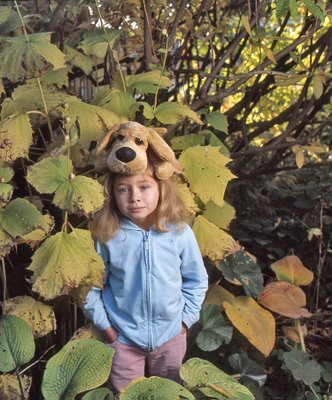 When Lauren saw Rebecca's photograph with the pollarded Hawthorne behind her she told me, "Rebecca looks haunted. Why didn't you photograph me haunted?" I really could not explain to her that she was much to cute with her dog Lulu to look haunted. The girls then looked at the pictures before I selected the three you see here. And I heard some shouting. It got ugly! It seems that Rebecca also has a toy dog called Lulu. I asked Rebecca if I had ever photographed her with Lulu but she did not answer. I have photographed Rebecca with most of her stuffed toys including her erstwhile favourite Lilly the cat. I simply could not recall a Lulu. The fighting continued and I may have added wood to the fire. It was interesting how Lauren, 6, held her own as Rebecca, 11, increasingly became more agitated. 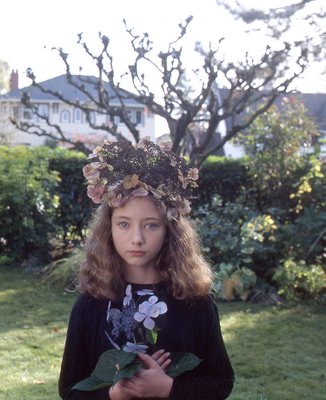 I asked again about Lulu and this time I understood. Rebecca has a Nintendo DS (that stands for double screen) Lite. She nagged and nagged and between allowance, etc she bought her "DS box". When Rebecca misbehaves her mother punishes her by taking away her DS box privileges. Rebecca knows (because I told her) that I call it the DSB and that DSB stands for Dumb Sh.. Box. I have watched the game in use. It features (I believe it varies depending on which cartridge you use) three or four(?)little dogs that Rebecca makes beg, sit, run and rollover on demand with her voice. One of the dogs is a beagle called Lulu. Rebecca immediately answered when I told her that one dog was virtual and the other real, "No, one, is stuffed." Rebecca accepted that I would write this blog about the conflict in what seemed to be resigned silence. Rosemary seems to think that Lauren has robbed Rebecca's virtual dog of its identity. 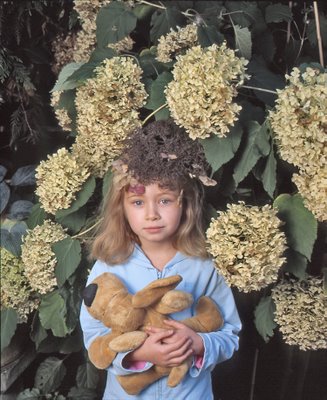 Lauren looked at every transparency (6x7cm transparencies) with my light box and correctly mastered the use of the lupe. She always wants me to get her a bench to stand on so she can look through the viewfinder of my Mamiya. Could this be possible? Will there be another photographer in the family? As she left Rebecca gave me a sweet kiss. There is a strong possibility she might pose for me again for some sort of Halloween photograph.
Social Photographers & St Swithun Scents Up My Afternoon
Sunday, October 26, 2008
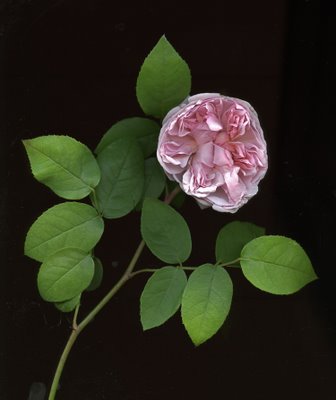 While I have always enjoyed taking photographs of people I have never been keen on the social photographers like Lewis Hine, Walker Evans and Dorothea Lange. Perhaps I have seen their pictures too many times. Or perhaps I admire photographers who are more versatile like Edward Steichen and Margaret Bourke-White. Today I had one of those days where I had to go through my many photo books looking for photographs of social photographers, scanning them and then putting them into a CD in a narrative order. It quickly became evident that social photography is a much wider spectrum than I thought. Photographers like Baron de Meyer and Steichen photographed fashion as high fashion in high society. Bert Stern photographed fashion more down to earth and Irving Penn took his portable studio to New Guinea to photograph Asaro Mudmen in 1970. So even fashion photographers are social photographers in their own right. In the end I looked at Dorothea Lange, Lewis Hine and Walker Evans with refreshed eyes. In my class tomorrow at Van Arts where I will teach the segment Social Photographers to my History of Photography students I will do my best to pass on my new enthusiasm. Rebecca came for her piano lesson early today. When she was through at 10 I told her I wanted to photograph her outside with a Hydrangea aspera 'Villosa' flower on her head with the pollarded Hawthorne behind her. I was subjected to lots of negative palaver and some mild shouting but in the end I got my way. Lauren arrived in the afternoon at 4. She was a lot more cooperative. I photographed both Rebecca and Lauren with colour transparency. I will post these photos in tomorrow's blog. As I was packing my equipment and my light I got a whiff of that complex myrrh scent that could only come from an English Rose. In spite of the cold and last night's frost there was Rosa 'St Swithun' with one flower completely open bechoning me to sniff and cut. Here she is above.
|










